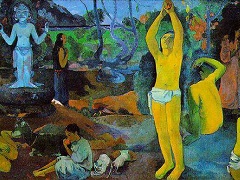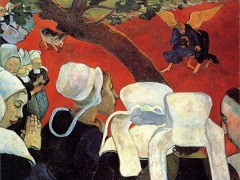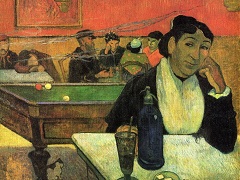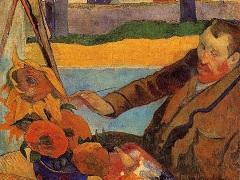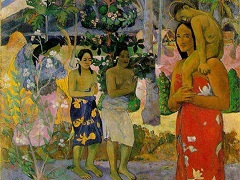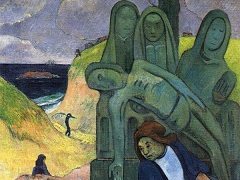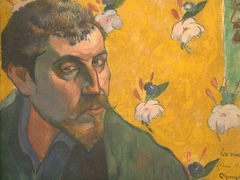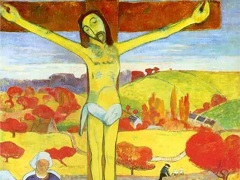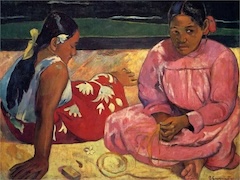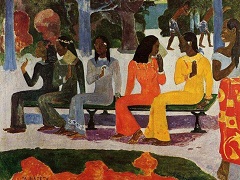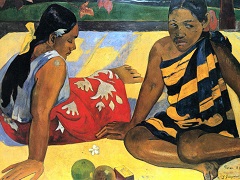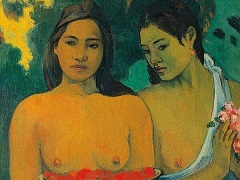Nevermore, 1897 by Paul Gauguin
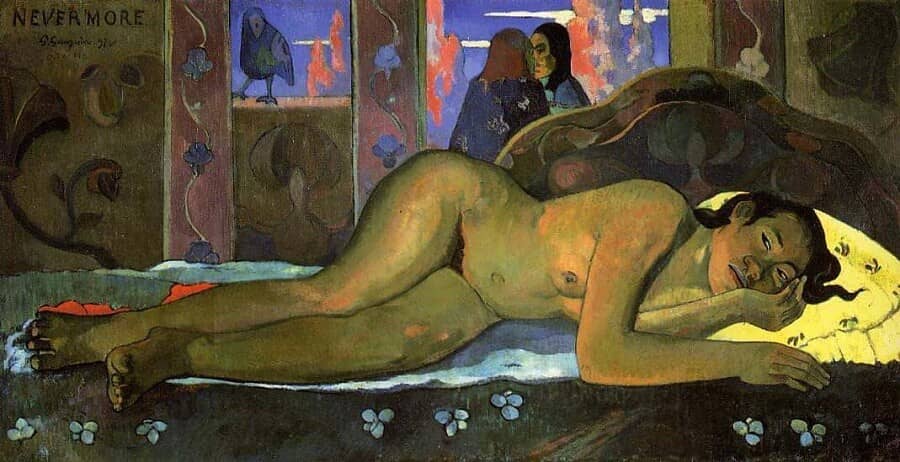
Like The Spirit of the Dead Watches of five years earlier, this picture can be seen as a "simple study of an Oceanic nude." Here too there is a reminiscence of the composition of Edouard Manet's Olympia, which Gauguin admired, and the clear, continuous outline around the figure suggests the earlier artist's anti-Impressionist use of conventional contour. But the mood of the painting is far from Manet's cool vision. It shows how much Gauguin's romantic imagination often quite consciously affected the interpretation of his surroundings, which were frequently squalid, and, for a realist, without charm. Gauguin was no realist:
I wanted to make a simple nude suggest a certain barbaric splendor of times gone by. The whole painting is bathed in colors that are deliberately somber and sad. Neither silk nor velvet, neither batiste nor gold creates this splendor, but simply paint enhanced through the artist's skill. No tricks [but] imagination alone has by its fancy enriched this dwelling.
"For a title, Nevermore; not 'The Raven' of Edgar Poe, but a bird of the devil who watches."
Even here Gauguin has employed a frieze technique. He has echoed the curves of the nude in the outline of the bedstead and in the stylized floral patterns on the wall, beneath the title, and around the raven. But these freely drawn shapes are held tightly in the rigid verticals of the architecture. Between its rhythmic intervals we are allowed brief glimpses of a space beyond, which only increases the element of mystery within. Here, if anywhere, Mallarme's enigmatic phrase applies: "It is extraordinary to be able to put such mystery into such brilliance."

